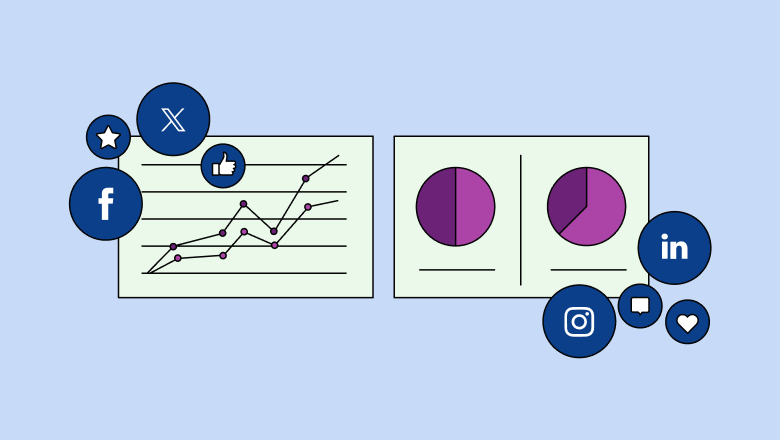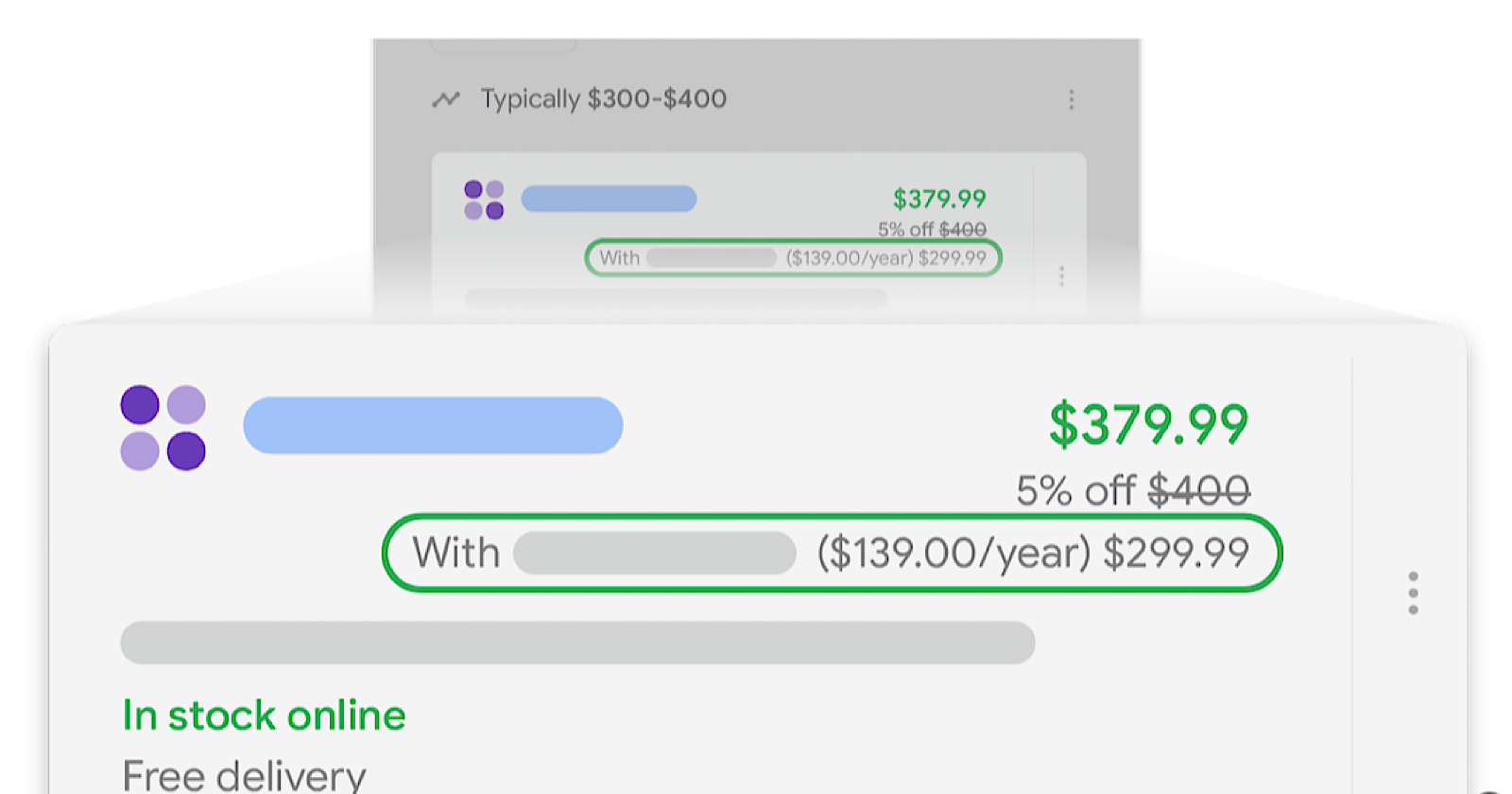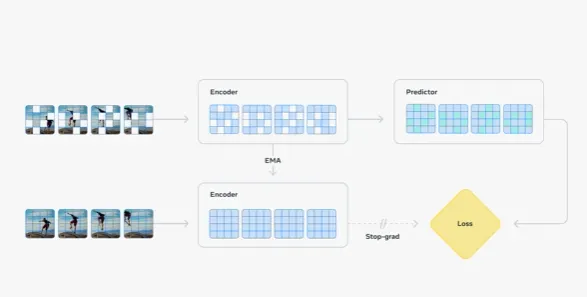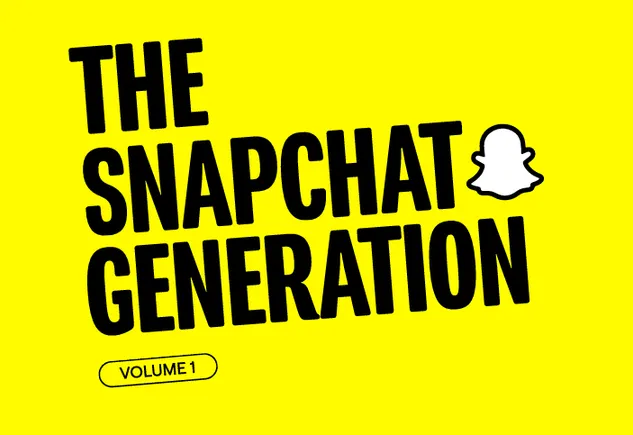How to perform a social media competitive analysis (+ free template)
To thrive in a fast-paced digital world means keeping a close eye on the strategies that work for others in your industry. This competitive Read more... The post How to perform a social media competitive analysis (+ free template) appeared first on Sprout Social.

To thrive in a fast-paced digital world means keeping a close eye on the strategies that work for others in your industry. This competitive analysis is essential to understand the ever-evolving landscape of social media so you can build a robust marketing strategy.
Social media competitive analysis demands a proactive approach because social media strategies don’t work in a vacuum. That’s why you need to regularly analyze the tactics, successes and failures of your competitors. This will help surface the gaps in your strategies and uncover opportunities to differentiate yourself from the competition.
These insights will help you better target your audience, optimize content and improve your overall online presence and share of voice. Ultimately, they will give you that critical edge necessary for long-lasting success.
Continue reading to learn more about the advantages of social media competitive analysis and how to perform it.
What is social media competitive analysis?
Social media competitive analysis is the process of evaluating your competitors’ social media strategies, content and performance to gain insights into what works well in your industry.

This involves tracking several measures, such as follower growth, engagement rates, content types, posting frequency and customer sentiment.
What are the benefits of social media competitor analysis?
Competitive analysis on social media provides valuable insights to help you understand where your brand stands compared to your competitors and how you can win against them.
Here’s a deep dive into some of the important benefits of social media competitor analysis.

Identify gaps and opportunities
Social media competitive analysis helps you spot differentiating factors that can give your brand a boost. For example, when analyzing your competitors’ social media efforts, you may notice areas they’re underperforming in or neglecting. For instance, a competitor might be active on Instagram but have little presence on platforms like TikTok or LinkedIn, leaving an untapped audience segment. By identifying these gaps, you can seize the opportunity to engage audiences on underused platforms or address topics your competitors aren’t covering.
Plus, if a competitor lacks certain content formats, such as video tutorials or interactive polls, you can introduce those to cut through the saturation and meet audience needs they may be overlooking. This analysis also allows you to set measurable, data-driven goals based on industry benchmarks. By comparing your social media performance to your competitors, you can track your growth more realistically and find the best ways to use or improve your strategies.
Strengthen your content strategy
This content performance analysis will tell you which types of content attract your competitors’ audiences. This includes video, infographics, user-generated content (UGC) or blog posts. Knowing what drives interaction and conversation in your industry will help you strengthen your strategy.
For example, if your competitor’s product demos or customer testimonials generate high levels of engagement, incorporate similar formats into your content strategy to capture audience attention. Similarly, analyzing how competitors structure their posts and use visuals or storytelling techniques can guide what styles and messaging resonate best with your shared audience. You can also add special elements to make your brand stand out.
By constantly adjusting based on competitive insights, you can keep your content fresh, relevant and more likely to drive meaningful engagement.
Improve audience targeting
Closely examining how your competitors engage with their audience can give you insights into who their followers are, what content they like and how they interact with it. This includes observing the types of posts that get the most engagement, the tone and style of communication and the platforms where their audience is most active.
For example, if a competitor’s Instagram posts are about behind-the-scenes content and they get high engagement, you might infer that your shared target audience values authenticity and transparency. You can then adapt your content strategy to include similar elements, such as behind-the-scenes posts or more candid moments, which will better align with your audience’s preferences.
Knowing what type of messaging resonates with them can also help you adjust your social media ads as well as improve engagement and conversion rates.
Improve your social customer care
Social media competitor analysis gives you a clear idea of how your competitors handle customer interactions. This can help you improve your social customer service. You can see how quickly competitors respond to customers, what and how they talk to customers, plus how they solve problems. This can help you avoid common mistakes and emulate good customer care strategies.
For example, if competitors are effectively resolving complaints publicly and turning negative situations into positive experiences, you can adopt similar tactics to improve customer satisfaction. Similarly, understanding the types of inquiries or issues customers often bring up can help you prepare responses and resources to address those needs quickly.
Similarly, if you notice your competitors are slow to respond to their audiences, ignore certain platforms or fail to provide helpful solutions, you also have an opportunity to differentiate your brand by offering even more superior customer service in those areas.
Fixing problems quickly, showing that you value customer feedback and proactively engaging with your audience will significantly boost your brand’s reputation. According to the 2025 Sprout Social Index™, nearly three-quarters of consumers expect brands to reply on social media within a day—if not sooner. Another 73% said they’d turn to a competitor if a brand doesn’t respond at all, clearly demonstrating the impact of fast, responsive customer care on brand loyalty.
Stay ahead of trends
Monitoring your competitors’ social media activities helps you stay informed about emerging trends, enabling you to adapt quickly and maintain a competitive edge. By observing how your competitors experiment with new platforms, content formats or engagement strategies, you can identify successful tactics and confidently integrate them into your approaches.
For example, if a competitor is gaining engagement and traction through interactive content like live videos or AR filters, you can adopt a similar approach to keep your audience engaged and position your brand as forward-thinking. In the same way, competitive analysis can help you spot shifts in consumer behavior, such as a growing preference for short-form videos or more personalized content. This can help you proactively adjust your strategy to meet evolving consumer expectations.
Staying up to date with trends keeps your brand relevant. It also makes you a leader in your industry, which helps your audience stay loyal and engaged.
How to perform a social media competitive analysis
Before we start, download our social media competitive analysis template to maximize the use of this article and make it even easier to follow these steps. The steps below will help you navigate the Sprout Social platform, referencing the template at each stage.
1. Set up competitor reports
Identifying and tracking the brands competing for your audience’s attention helps you analyze their strategy to see what’s working for them, what’s missing and where you can improve.
The Index™ also revealed that most consumers—a staggering 93%—believe brands should stay in tune with online trends and culture. By monitoring how competitors position themselves and where they succeed, you gain a blueprint to improve your social media strategy.
To begin drafting your blueprint, you need to identify your competitors.
Look at brands in your industry that are highly active on social media. These are the brands you can learn from and benchmark your social media strategy against.
Your direct competitors on social are brands that sell the same products as you. Let’s use our fictional coffee company, Sprout Coffee, as an example: La Colombe, Peet’s Coffee, Caribou and local coffee shops are all direct competitors.
But you also have to watch for indirect competitors—brands that don’t sell the same product but meet a similar need or serve a similar audience. For Sprout Coffee, that could include grocery stores or local cafes selling food and coffee.
How to identify your social media competition
Simply Google it! Search the keywords consumers would use to find your business. For Sprout Coffee, you might search “ground coffee” or “instant coffee.”
Look for websites and brand social accounts in your specific industry. In our example, La Colombe and Folgers could be good options. Peet’s Coffee is a popular coffee company that’s very active on social media.

To get more specific to your audience, perform some market research or competitive monitoring. With social media listening, you’ll uncover conversations your audience is having about you, your industry and your competition—even when they don’t tag your handles.
Once you’ve lined up your competitors, it’s time to set up competitor reports with Sprout to track their performance.
Want to try it yourself? Start a free 30-day trial using your business email to follow along. Then, let’s walk through the steps to create these reports:
- Navigate to the Reports tab in your Sprout dashboard.
- Under Cross-Network Reports, select Competitor Performance.
- Select the date range you want to analyze with the date picker at the top of the report.
- Click Filters to customize the types of data you want to view (like engagement or post type).
- Click Sources to choose which profiles to include in your comparison (your social profiles or competitors’ social profiles).

- Select Hide Your Profiles to view only competitor data.
- Choose Competitor Sources to select specific competitor profiles for side-by-side comparisons.

Pro tip: Focus on brands that share your audience or product category, not just the most prominent industry names.
2. Track competitor content performance
Your audience doesn’t just follow you. They follow your competitors, too. The competitor report in Sprout is your window into what resonates with your shared audience. Analyzing where your competition performs well will enable you to uncover gaps, trends and new opportunities to stand out. With your competitor report set up, it’s time to put your insights to work.
Sprout’s reporting tool gives you a centralized view of how your competitors are performing across social media channels (Facebook, Instagram and X), making it easier to spot trends and benchmark your brand’s performance. You can track posting frequency, which formats achieve the highest engagement (like Reels, carousels or polls) and the sources of their audience growth.
Head to the Overview tab to find:
- A high-level summary: Key metrics like followers, audience growth, publishing behavior and engagement rates
- Audience growth: Net follower growth, percentage growth by platform
- Publishing behavior: Publishing cadence and the types of posts competitors publish
- Top posts: Posts with the highest engagement

- Engagement breakdown: Types of public interactions by social network

Competitor reports make it easier to spot gaps in your own content plan, adjust your posting frequency or test new content formats based on what’s working.
With your big picture overview completed, you can dig deeper into specific social media channel performance. Sprout’s competitor reports for Instagram, Facebook and X (formerly Twitter) enable you to analyze each brand’s performance network-by-network.
Instagram competitive analysis
Start by doing a visual analysis of your competition’s Instagram account. Ask yourself:
- Do they use a link in bio tool? How often are they updating it?
- How often are they active on stories? What does that content look like?
- Do they have a brand-specific hashtag?
- What do they say in their bio to set themselves apart?
- Are they using Instagram highlights?
Level up by using Sprout’s Instagram Competitors Report to compare and benchmark your brand against competitors at a glance in key areas:
- Audience growth: Are your competitors growing their audience quicker than you?
- Posting frequency: How frequently are your competitors publishing? This can reveal whether you’re posting enough to keep your audience engaged.

- Hashtags: What hashtags do your competitors use to gain more exposure?
- Top posts: Try to get an idea of why these posts are performing well. Are they product photos? Do they use certain colors? Find out what these posts have that your content doesn’t and use the info to improve your images and videos.

Pro tip: Another tactic is to search for your competitors by hashtag on Instagram, like #Folgers, to see how many people are tagging your competitors in posts. If it’s a lot, that indicates the company is getting noticed and has an active following.

This will also give you a sense of what hashtags people use to refer to other brands and could spark ideas for hashtags to use for your brand.
Once you have all the information from your Instagram competitive analysis research, make sure you add that data to your competitive analysis template, like so:

Facebook competitive analysis
Start by doing a manual review of your competitor’s page, looking for the basics:
- Check the number of follows and page likes.
- Identify specific tabs or features they have. For example, some coffee roasters might have the Shops section enabled. If you notice the same trend with other competitors, it’s likely a good sign it’s working for them.
- Look at their visuals and branding.
- Review their About section to see how they set their business and social presence apart.

A visual analysis is nice, but it only goes so deep. This is where Sprout’s Facebook Competitor Report comes in to judge how well the competition’s content performs over time.
Use this report to see:
- How many messages your competitors send and receive
- The types of content they post (text, images or videos)
- Engagement and the number of received messages
All of this will answer questions about your competition’s presence and how you can stand out from it.

Include this in your spreadsheet, as well as any specific metrics that are important to your strategy.
X competitive analysis
Your X analysis will look similar to your Facebook analysis.
Here are a few areas to take note of:
- Note the number of followers.
- Look at the visuals and branding of their cover image and profile picture. How often do they shift these visuals?
- Review their bio. What are they highlighting? How have they set themselves apart?
- Do they adjust their X name (not their handle) for holidays like Halloween?
To see a more direct, automatic comparison between your X account and your competitors, level up with Sprout’s X analytics. This compares your X profiles against each other or a competitor. Select your X account, then enter a competitor for the other slot.
The report shows engagement, influence, followers gained/lost and mentions. You can change the time period, but it’s best to stick to the last 30 days to keep the data relevant.

Once you’ve looked over all the competitive social media analysis from the X report, be sure to enter the data into your spreadsheet. Tracking this information can be extremely valuable down the line.

Level up your data
Our spreadsheet and Sprout’s reports include Facebook, Twitter and Instagram.
But it’s still a good idea to conduct a manual analysis of any additional social channels, like LinkedIn and TikTok, relevant to your brand and audience.
Also, explore Sprout’s new competitor widgets available in the Professional and Advanced plans. These enable you to customize reports and include your data alongside competitor data in one singular report.

3. Use social listening to monitor competitor mentions and sentiment
If you’re new to social media competitive analysis, starting with Sprout’s template will help you get familiar with your competitors’ social media performance and uncover patterns to tune into. When you’re ready to take the next step with your competitive analysis, tap into social listening.
Social listening provides a broader perspective on industry and competitor conversations across social media, even when you aren’t tagged. When you combine Sprout’s network competitor reports with social listening, you expand your reach, capturing conversations on social channels like YouTube and Reddit and the broader web.
Here’s how to set up competitor monitoring using Sprout’s Social Listening tool:
- Navigate to Listening from the left-hand menu of your dashboard.
- Click New Topic and select the Competitive Analysis template.
- Name your topic with the option to provide a description.
- Add competitors by entering their brand names, relevant keywords, hashtags or user mentions in the Competitor Query Card. You can add up to 10 competitors per topic.

Fine-tune your setup by adding your brand handle for side‑by‑side comparison, or filter it out to avoid skewing data. You can also quickly preview and refine the query to ensure it’s pulling the most relevant conversations.
Finally, save and activate your Listening Topic to start collecting data.
Sprout’s Listening tool is invaluable for uncovering market gaps, finding relevant conversations to engage in and more. For example, Grammarly uses Sprout’s Listening tools to provide cross-team insights and analyze its competitive share of voice on social. Sprout helped Grammarly identify that it owned 71% of its competitive share of voice.
Sprout’s built-in competitive analysis tools also make it easy to measure your competitors’ social presence and compare it to yours.

With this template, you can identify the top competitors you want to track and include specific profiles, keywords, phrases and hashtags that you want Sprout to listen to.
To see what Sprout’s Listening tools can do for your brand, request a demo to try it for yourself.
4. Benchmark performance against industry leaders
Sprout makes benchmarking simple with the Competitor Performance Report. You can measure how your brand stacks up to industry peers across Facebook, Instagram and X, focusing on key metrics like:
- Followers average: How your audience size compares
- Public engagements average: How active audiences are across social profiles
- Engagements per post: How effective your content is by individual post
- Publishing behavior: How often brands publish and the types of posts they prioritize
But don’t stop there. Half of competitive intelligence is quantitative. The other half is qualitative.
To get a true 360° view of your competitors’ social strategy, dig deeper into how they present themselves.
Start by looking at:
- Competitor activity: How often do they post? How quickly do they respond to comments? How consistent is their overall presentation on social?
- Content types: Are they focusing on Reels, Stories, polls or user-generated content? Are they relying heavily on promotional posts?
- Brand persona and tone: Is their voice playful, serious or informative? Are they using brand-led posts or more individual, humanized messaging?
How active is the competition?
It’s fairly easy to gauge how active brands are by answering these questions:
- When was the last time they posted?
- Are there long spans of time between each post?
- Do they respond to comments?
- How in-depth are their responses to comments?
Brands should post at least once every few days to be considered active. But you risk falling behind if your competitors post several times a day more than you do. For example, X allows for a lot more flexibility when it comes to how often to post—are your competitors significantly outpacing your daily posts?
Looking into all of this sheds light on their customer care strategies, content and any existing gaps.
What types of content do they post?
The 2023 Content Benchmarks Report revealed that 53% of marketers consider changing content formats a significant challenge when planning and scheduling content.

Look at each competitor’s last 10 posts and calculate what percentage of them are promotional, like prompting their audience to sign up, shop, etc.
This can also apply to the content formats they post. Are they posting a lot of video content? Mainly photos? Do they lean heavily on creators and user-generated content? How often do they jump on trending sounds or social media memes?
Use this information to see what content formats they’re using to pull ahead and cut the guesswork out of your strategy.
What’s their brand persona?
Some marketers like to look at their competitors’ brand voice when conducting social media analysis. Voice describes the tone and POV a brand uses on social media. Do they post from the brand’s perspective (we), or do they have individuals post on the brand’s behalf?
For example, consider the tone of the Field Museum’s social account.

The Field Museum’s tone is very different from the American Museum of Natural History’s tone. They each have their own online personalities.

Level up: As you wrap up, take a look at your competitors’ websites—content marketing and social media are closely related. A lot of companies repurpose their blogs for social media content. Take a look at your competition and see how many of them are maximizing their bevy of content.
Once you go through each competitor, put the data into your social media competitive analysis template.
5. Apply insights to improve your social strategy
After gathering quantitative metrics (like follower growth and engagement rates) and qualitative insights (like content style and brand tone), it’s time to put your findings to work.
Here’s how to apply your competitive insights with Sprout:
Tweak your content calendar
Adjust your publishing cadence to stay competitive if your competitors post more frequently, especially on platforms like X.
Sprout’s Publishing Calendar makes visualizing and readjusting your posting schedule easy.

Borrow high-performing content themes
Notice which content formats—like Reels, carousels or polls—drive engagement for competitors. Use these insights to refresh your content mix while staying aligned with your brand voice.
For example, if a competitor’s benchmarks show strong engagement with behind-the-scenes videos, take it as an opportunity to create similar content that humanizes your brand.
Adjust posting times based on audience behavior
Benchmark data may reveal that your competitors’ audiences are most active during evenings or weekends. Use Sprout’s Optimal Send Times capability to automatically schedule posts for peak engagement.

Refine your messaging and brand voice
Qualitative benchmarking often highlights tone gaps you can fill. Adopting a relatable, conversational tone may inspire more brand loyalty if your competitors sound formal and transactional.
For example, if competitors post only promotional updates, you could integrate storytelling content on your feeds to build an emotional connection with your audience and gain a competitive edge.
Fill in the gaps competitors miss
Listening insights do more than just measure how well your competitors are doing. They also reveal competitors’ weaknesses like customer service dissatisfaction, lack of authenticity or limited engagement.
This is your opportunity to position your brand as the solution, directly addressing pain points with relevant content, support and messaging.
Top 3 social media competitive analysis tools
Here are the top three social media competitor analysis tools that can help you strengthen your social strategy and realize your goals more effectively.
1. Sprout Social
Sprout gives you a comprehensive social media competitive analysis across different social channels, such as Facebook, Instagram or X, and hundreds of data points. Whether you’re curious about your competitors’ content or want to benchmark your progress against theirs, Sprout automates your efforts and removes the need for manual research and cluttered spreadsheets.

Sprout’s Premium Analytics gives you in-depth insights into your social performance through customizable, interactive charts and graphs tailored to your objectives. For example, its Share of Voice Report helps you measure your brand’s presence relative to competitors by analyzing mentions and sentiment. Plus, the Benchmark Report enables you to compare your social media performance against industry standards and competitors’ profiles.

Plus, explore public social conversations with the Advanced Listening tool to gauge consumer sentiment around your competitors’ products and services. This helps you narrow down opportunities to differentiate your brand in the marketplace.
2. Buzzsumo
Buzzsumo helps you analyze your top-performing content so you get insights on relevant topics for your brand and your competitors. You can use the tool to monitor content performance on social accounts and across other online channels.

The tool also helps identify content formats and engagement metrics, helping you understand what strategies work in your industry. You can also monitor backlinks and social shares, providing insights into how your competitors’ content spreads. This data helps you refine your content distribution to stay competitive.
3. Social Blade
Social Blade provides detailed social media competitive analysis insights through statistics and growth trends for various social media accounts. It tracks metrics like follower counts, engagement rates and content performance across networks such as YouTube, Instagram and X. Comparing these metrics with your competitors can help you understand their social media effectiveness and identify growth patterns.

Social Blade also offers historical data and projections so you can benchmark your performance and strategize accordingly. It also simplifies tracking competitor success and adjusting your social media strategies.
Dive into the data with a social media competitive analysis
In the end, the social media competitive analysis process is all about comparing your brand’s metrics and data to the competition. Then, you can make any necessary adjustments to get a leg up.
You have the template—now, make your social media competitive analysis less daunting and more automated by adding Sprout to your toolbox. Try Sprout free for 30 days to learn how competitive analysis reports can help you uncover deeper insights to optimize your strategy.
The post How to perform a social media competitive analysis (+ free template) appeared first on Sprout Social.

























![Brand and SEO Sitting on a Tree: K-I-S-S-I-N-G [Mozcon 2025 Speaker Series]](https://moz.com/images/blog/banners/Mozcon2025_SpeakerBlogHeader_1180x400_LidiaInfante_London.png?auto=compress,format&fit=crop&dm=1749465874&s=56275e60eb1f4363767c42d318c4ef4a#)

![How To Launch, Grow, and Scale a Community That Supports Your Brand [MozCon 2025 Speaker Series]](https://moz.com/images/blog/banners/Mozcon2025_SpeakerBlogHeader_1180x400_Areej-abuali_London.png?auto=compress,format&fit=crop&dm=1747732165&s=beb7825c980a8c74f9a756ec91c8d68b#)
![Clicks Don’t Pay the Bills: Use This Audit Framework To Prove Content Revenue [Mozcon 2025 Speaker Series]](https://moz.com/images/blog/banners/Mozcon2025_SpeakerBlogHeader_1180x400_Hellen_London.png?auto=compress,format&fit=crop&dm=1747758249&s=9f3c5b1b7421f862beace1cb513053bb#)






















![The 11 Best Landing Page Builder Software Tools [2025]](https://www.growthmarketingpro.com/wp-content/uploads/2024/04/best-landing-page-software-hero-image-1024x618.png?#)




































![Is Google About To Bury Your Website? [Webinar] via @sejournal, @lorenbaker](https://www.searchenginejournal.com/wp-content/uploads/2025/06/3-271.png)












![Marketers Using AI Publish 42% More Content [+ New Research Report]](https://ahrefs.com/blog/wp-content/uploads/2025/06/marketers-using-ai-publish-42-more-by-ryan-law-data-studies-1.jpg)
















![Social media image sizes for all networks [June 2025]](https://blog.hootsuite.com/wp-content/uploads/2023/01/Social-Media-Image-Sizes-2023.png)

![The HubSpot Blog’s AI Trends for Marketers Report [key findings from 1,000+ marketing pros]](https://www.hubspot.com/hubfs/state-of-AI-1-20240626-53394.webp)
![AI can boost conversions from your web page — HubSpot’s CMO shows you how [tutorial]](https://knowledge.hubspot.com/hubfs/ai-1-20250605-395473.webp)
![The state of inclusive marketing in 2025 [new data + expert insight]](https://www.hubspot.com/hubfs/inclusive-marketing-report.webp)




















